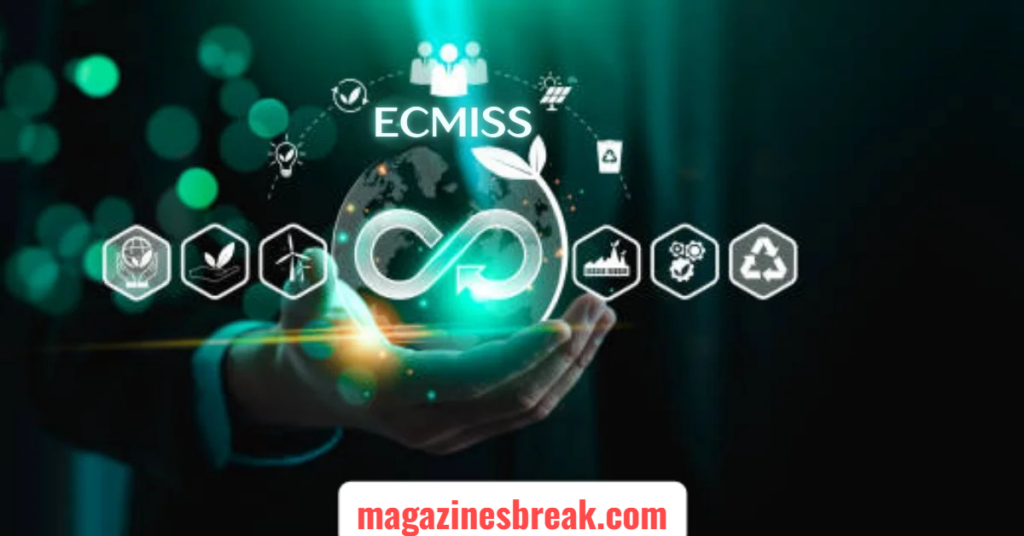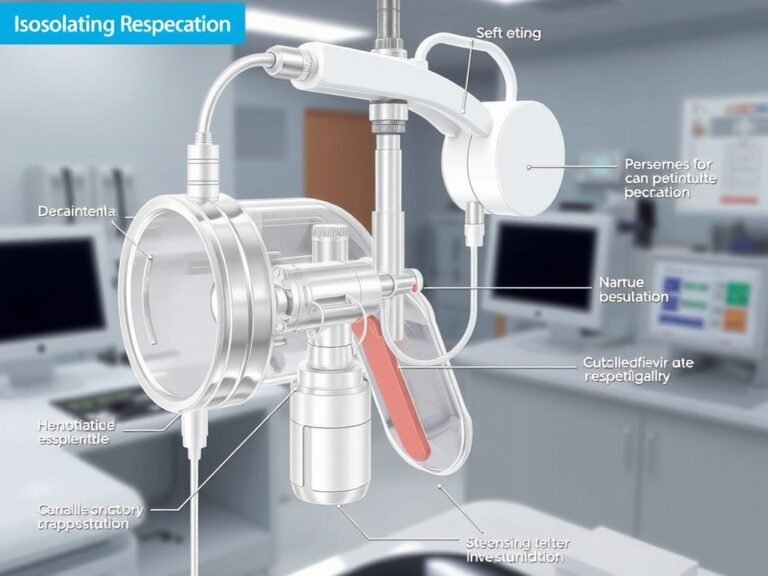
Introduction: Understanding the Core of ECMISS
In the modern age of interconnected systems, emerging technologies, and global data exchange, the term ecmiss has been gaining attention in specialized discussions. While not widely known to the general public, ecmiss is increasingly recognized in professional, industrial, and academic spaces for its role in optimizing operations, managing information, and enhancing decision-making efficiency. Whether you are a business owner seeking competitive advantages, a researcher analyzing system integrations, or simply an individual curious about the evolving digital landscape, understanding ecmiss provides valuable insight into how technology bridges the gap between complex processes and practical outcomes.
In this guide, we will explore ecmiss from multiple perspectives—its definition, historical context, use cases, industry relevance, challenges, and future potential. The goal is to give you a complete, easy-to-understand, fact-driven reference that can help you see why ecmiss is more than just a passing technical term; it is a transformative approach in multiple domains.
What is ECMISS?
At its core, ecmiss can be described as a framework or methodology designed to enhance operational efficiency, data integration, and system interoperability in complex environments. The concept is built around the idea that multiple independent components within a system must communicate and work together seamlessly for optimal results.
Think of it as a bridge connecting disparate tools, databases, and operational workflows into a unified, functioning ecosystem. In many professional sectors, ecmiss involves:
- Standardized protocols to ensure smooth data exchange
- Automated workflows that reduce human error and save time
- Advanced monitoring systems that provide real-time performance analytics
- Strategic integration of multiple platforms for cohesive results
By implementing ecmiss, organizations are better equipped to reduce redundancies, improve communication between departments, and achieve consistent performance across different operational areas.
Historical Evolution of ECMISS
The origins of ecmiss trace back to early efforts in system integration and information management during the late 20th century. Initially, most industries relied on isolated tools and manual coordination to get work done. This fragmented approach often caused delays, data inconsistencies, and operational bottlenecks.
The push towards integration began in the 1980s when computing systems started entering mainstream corporate environments. However, it wasn’t until the late 1990s and early 2000s, with the explosion of the internet and cloud technologies, that structured ecmiss-like frameworks started emerging.
Today, the evolution of ecmiss is tied to major technological advancements, including:
- Artificial Intelligence (AI) for predictive analysis
- Cloud computing for scalable and accessible systems
- Big data analytics for informed decision-making
- IoT (Internet of Things) for real-time monitoring and automation
These technologies transformed ecmiss from a basic integration idea into a strategic backbone for modern operations.
Key Components of ECMISS
To fully understand ecmiss, it’s important to break down its main components. A typical ecmiss system consists of:
- Integration Layer – Connects and synchronizes various systems, ensuring smooth communication.
- Data Management Module – Stores, organizes, and processes critical information efficiently.
- Automation Engine – Executes repetitive tasks without manual intervention.
- Monitoring Dashboard – Displays real-time operational performance metrics.
- Security Framework – Protects sensitive data from unauthorized access and cyber threats.
These components work together to form a seamless operational environment that supports both human and machine collaboration.
ECMISS in Business Operations
The adoption of ecmiss in businesses has revolutionized the way organizations function. In traditional settings, companies often struggled with departmental silos, where marketing, sales, operations, and customer support worked independently, leading to poor coordination. ECMISS changes that by creating a shared operational language across all departments.
For example:
- A sales team can instantly access updated product availability from the inventory department.
- A customer service agent can retrieve detailed order histories without manually requesting data.
- A project manager can track progress across teams using centralized dashboards.
Benefits in business include:
- Improved communication and collaboration
- Reduced operational delays
- Increased data accuracy
- Enhanced decision-making speed
Real-World Applications of ECMISS
While ecmiss has universal principles, its applications vary across industries:
- Healthcare – Integrating patient data from multiple clinics into one secure database.
- Manufacturing – Automating production lines while monitoring supply chain performance.
- Education – Creating unified digital learning platforms for teachers and students.
- Finance – Linking multiple banking systems to improve transaction security and speed.
- Government – Coordinating data between public service departments for better governance.
In each case, ecmiss plays a role in streamlining workflows, reducing redundancy, and improving service delivery.
Challenges in Implementing ECMISS
Despite its benefits, ecmiss adoption is not without challenges. Businesses often face:
- High Initial Costs – Infrastructure, software, and training can require significant investment.
- Resistance to Change – Employees may be reluctant to adopt new processes.
- Data Security Concerns – Integration means more interconnected vulnerabilities.
- Complex Setup – Requires skilled professionals to design and maintain systems.
The key to overcoming these challenges lies in proper planning, phased implementation, and continuous employee training.
Security and Compliance in ECMISS
In today’s cyber-threat-heavy environment, ecmiss systems must prioritize security. This means implementing multi-layered security protocols such as:
- Encryption – Protects data during storage and transmission.
- Access Controls – Ensures only authorized users can access sensitive data.
- Regular Audits – Identifies and fixes vulnerabilities.
- Compliance Checks – Aligns systems with legal standards like GDPR or HIPAA.
Without strong security, even the most sophisticated ecmiss setup can become a liability.
Table: Comparing Traditional vs ECMISS-Driven Systems
| Feature / Metric | Traditional Systems | ECMISS-Driven Systems |
| Data Integration | Limited | Seamless |
| Efficiency | Moderate | High |
| Real-Time Monitoring | Rare | Standard |
| Automation Level | Low | Extensive |
| Security Protocols | Basic | Advanced |
ECMISS and the Role of AI
Artificial Intelligence is one of the strongest drivers behind ecmiss innovation. AI-powered ecmiss systems can:
- Predict system failures before they happen
- Analyze vast datasets in seconds
- Recommend process improvements
- Automate complex decision-making
This AI integration takes ecmiss from a reactive tool to a proactive problem-solving system.
Future Trends in ECMISS
Looking ahead, we can expect ecmiss to evolve with:
- Stronger AI Capabilities – More predictive and adaptive systems.
- Quantum Computing Integration – Faster and more secure data processing.
- Expanded IoT Networks – Better real-time analytics from interconnected devices.
- Increased Customization – Systems tailored to niche industries.
These developments will make ecmiss even more critical in managing tomorrow’s complex technological ecosystems.
Conclusion: Why ECMISS Matters
In an age where information drives success, ecmiss stands out as a key enabler of efficiency, collaboration, and innovation. It bridges gaps between disconnected systems, enhances productivity, and empowers decision-makers with real-time insights. While challenges exist in its adoption, the benefits far outweigh the drawbacks for organizations that implement it effectively.
From small businesses to global enterprises, the future belongs to those who embrace ecmiss as part of their operational DNA.
FAQs About ECMISS
1. Is ECMISS only for large companies?
No. While large enterprises benefit significantly from ecmiss, small and medium-sized businesses can also adopt scaled versions to improve efficiency.
2. How long does it take to implement ECMISS?
Implementation time varies from a few weeks to several months, depending on system complexity and organizational readiness.
3. Is ECMISS the same as ERP software?
Not exactly. While both involve integration, ecmiss is a broader methodology that can incorporate ERP along with other specialized tools for comprehensive system management.






